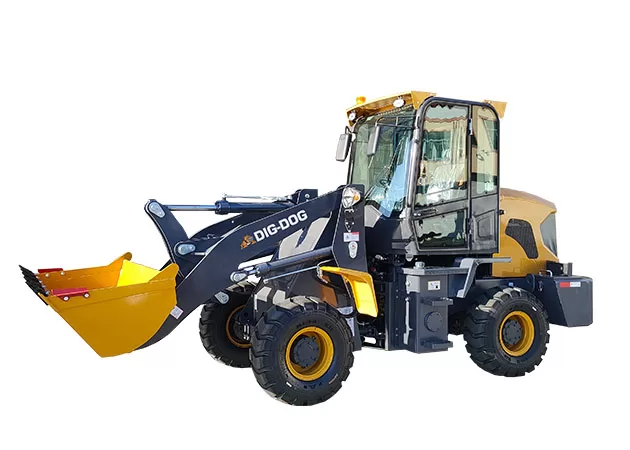Backhoe vs Digger: Understanding the Key Differences - Bonovo
In the construction and excavation industry, the terms "backhoe" and "digger" are often used interchangeably, leading to confusion among professionals and enthusiasts alike. However, it's essential to understand that these two pieces of heavy machinery are not the same. In this article, we will delve into the differences between a backhoe and a digger, providing clarity on their unique features and functionalities.

Understanding the Backhoe
A backhoe is a versatile piece of equipment that consists of a digging bucket on the end of an articulated arm. It is typically mounted on the back of a tractor or a front loader, hence the name "backhoe." The primary function of a backhoe is to excavate or dig through various materials such as soil, sand, gravel, and more. It is widely used in construction, landscaping, and agricultural projects due to its ability to perform multiple tasks, including digging trenches, removing debris, and lifting materials.
Key Features of a Backhoe
1. Articulated Arm: The backhoe's arm is designed to provide flexibility and reach, allowing it to access hard-to-reach areas and perform precise digging operations.
2. Swiveling Platform: Most backhoes are equipped with a swiveling platform that enables 180-degree rotation, enhancing maneuverability on the job site.
3. Hydraulic Controls: The hydraulic system of a backhoe provides power and precision, allowing operators to manipulate the arm and bucket with ease.
4. Loader Bucket: In addition to the digging bucket, a backhoe often comes with a loader bucket at the front, enabling it to handle material loading and transportation tasks.
Understanding the Digger
On the other hand, a digger, also known as an excavator, is a heavy-duty construction machine designed for digging and earthmoving tasks. Unlike a backhoe, a digger features a boom, stick, and bucket configuration, with a rotating platform known as the house. Excavators are known for their impressive digging depth and reach, making them ideal for large-scale excavation projects in urban development, mining, and road construction.
Key Features of a Digger
1. Boom and Stick: The boom and stick of an excavator provide powerful digging force and extended reach, allowing it to tackle deep excavation tasks with precision.
2. Rotating House: The ability of the digger's house to rotate 360 degrees enhances its operational efficiency by eliminating the need for frequent repositioning.
3. Track or Wheel Base: Excavators are available in both track-mounted and wheel-mounted configurations, offering versatility for different terrains and job site conditions.
4. Hydraulic System: Similar to backhoes, excavators rely on advanced hydraulic systems for smooth and efficient operation, including boom movement and bucket control.
Key Differences Between a Backhoe and a Digger
Now that we have explored the individual characteristics of backhoes and diggers, let's highlight the key differences between these two types of heavy machinery:
1. Configuration: A backhoe is typically mounted on the rear of a vehicle, while a digger (excavator) is a standalone machine with tracks or wheels for mobility.
2. Functionality: While both machines are designed for excavation purposes, backhoes excel in versatility, with the ability to perform loading and lifting tasks, whereas diggers are specialized for heavy-duty digging and earthmoving operations.
3. Size and Reach: Diggers are generally larger and more powerful than backhoes, offering greater digging depth and reach for extensive excavation projects.
4. Maneuverability: Backhoes are known for their agility and ease of navigation in confined spaces, thanks to their compact design and swiveling capabilities, whereas diggers are preferred for large-scale projects requiring substantial mobility and reach.
In conclusion, it is evident that backhoes and diggers serve distinct purposes in the construction and excavation industry. While both machines share the common goal of digging and earthmoving, their unique features, configurations, and functionalities set them apart. Whether it's the versatility of a backhoe or the power of a digger, understanding these differences is crucial for selecting the right equipment for specific project requirements. By recognizing the strengths of each machine, construction professionals can optimize their operations and achieve efficient results in various job site scenarios.
As technology continues to advance, innovations in backhoes and diggers are shaping the future of heavy machinery, offering enhanced performance, precision, and sustainability. With a clear understanding of these advancements and their implications for construction practices, industry professionals can stay ahead of the curve and maximize the potential of these essential equipment in the ever-evolving world of construction and excavation.




